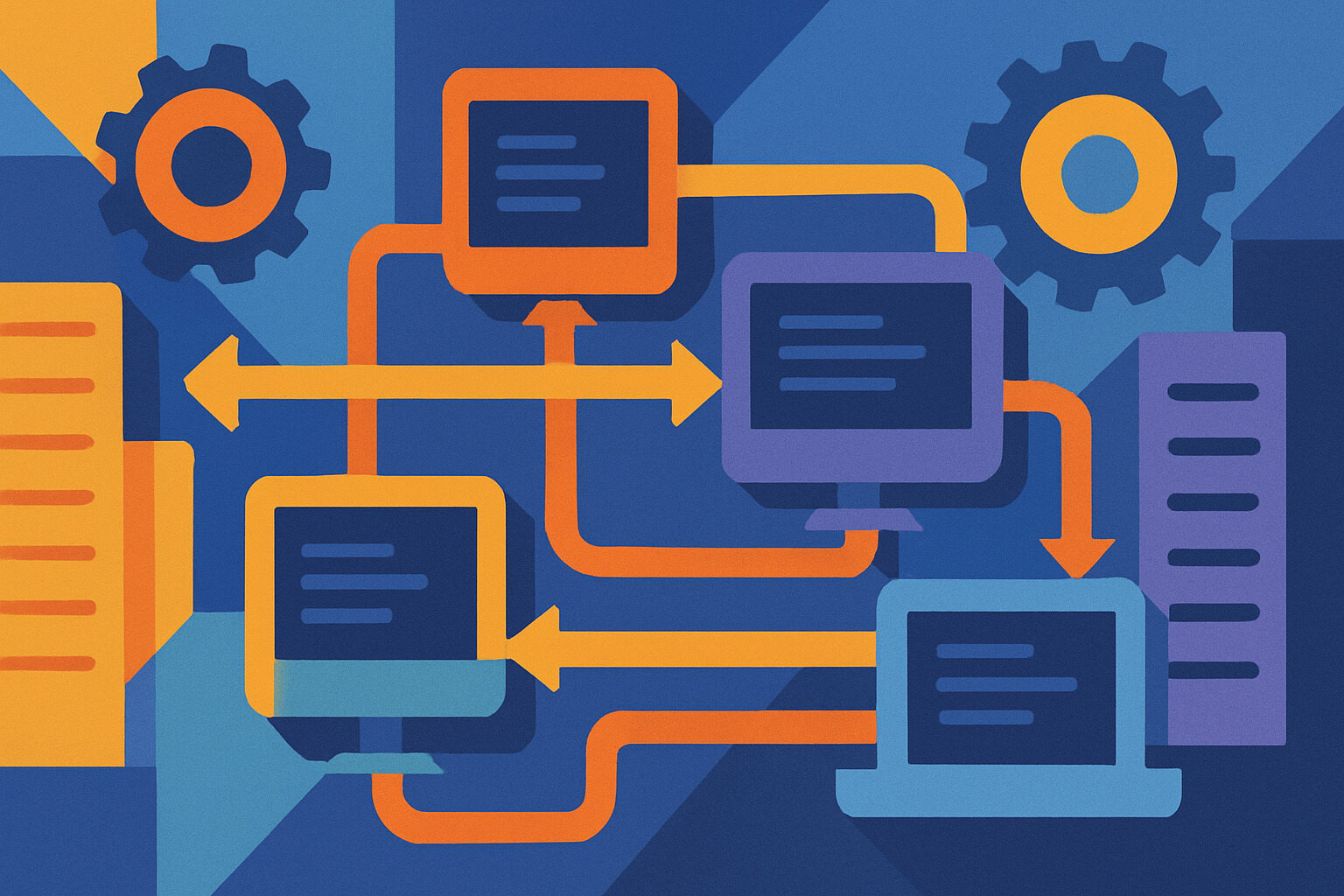Why Time Synchronization is Critical in Grid Computing
Grid computing networks rely on multiple distributed systems working together to process data and perform large-scale computations. For these systems to function smoothly, they must stay synchronized in time. Any misalignment can lead to inefficiencies, data inconsistencies, and system failures.
In a grid computing environment, tasks are divided among different nodes, each handling a portion of the workload. If these nodes are not properly synchronized, timestamps on data entries may differ, leading to errors in processing. Time synchronization ensures that all participating computers operate on the same timeline, reducing the risk of data conflicts and improving efficiency. Many organizations use standardized time zones, such as PST time to coordinate their distributed computing systems and maintain consistency in global operations.
As grid computing expands into industries like scientific research, finance, and artificial intelligence, the need for accurate timekeeping grows. A well-synchronized network improves performance, enhances security, and allows for real-time decision-making across multiple locations.
The Role of Time Synchronization in Distributed Computing
In traditional computing environments, time synchronization might not be a major concern, but in distributed systems like grid computing, it plays a crucial role. Without accurate timekeeping, transactions, logs, and computations may become unreliable.
One of the most common problems in unsynchronized networks is clock drift. Since each computing node has its own internal clock, minor variations occur over time. If left unchecked, these differences can accumulate, causing misalignment in scheduled tasks and inconsistent data records.
Time synchronization also affects security. In authentication protocols, time-sensitive encryption techniques require synchronized clocks to validate user sessions. Any deviation can lead to security breaches, where unauthorized access may be granted due to incorrect timestamp verification.
Challenges of Achieving Accurate Time Synchronization
Implementing time synchronization in grid computing comes with several challenges. Factors such as network latency, hardware differences, and system overloads can introduce inconsistencies.
One major challenge is network delay. Since grid computing networks operate over long distances, time synchronization packets traveling between nodes may experience delays. These delays can result in discrepancies between different nodes’ clocks, leading to incorrect time values being recorded.
Another issue is fault tolerance. In a distributed network, system failures and network disruptions are common. A well-designed synchronization mechanism should be able to handle failures gracefully, ensuring that time remains accurate even if some nodes experience connectivity issues.
Methods for Time Synchronization in Grid Computing
Several time synchronization methods are used in grid computing to ensure accuracy and consistency across all nodes. These methods vary in complexity and precision, depending on the system’s requirements.
One widely used approach is the Network Time Protocol (NTP). NTP synchronizes clocks across distributed systems by allowing nodes to communicate with dedicated time servers. These servers provide accurate timestamps, which help adjust clocks across the network.
Another method is the Precision Time Protocol (PTP). PTP is used in high-performance computing environments where even microsecond-level accuracy is required. This protocol minimizes network latency by using specialized hardware to achieve highly accurate time synchronization.
The Impact of Time Synchronization on Performance
Well-synchronized computing networks perform more efficiently, reducing the risk of system errors and improving task execution times. In grid computing, even minor discrepancies in timekeeping can lead to major inefficiencies.
For example, in scientific simulations that involve multiple datasets, time misalignment can result in inaccurate results. When running real-time financial transactions, delayed timestamps may lead to discrepancies in trading data, causing losses or errors in reporting.
Beyond efficiency, time synchronization enhances system reliability. A properly synchronized grid ensures that log files and error reports are accurately timestamped, making debugging and system maintenance much easier.
Security Implications of Time Synchronization
Time synchronization plays an important role in securing grid computing networks. Many security mechanisms rely on precise timekeeping to authenticate users and protect data integrity.
For instance, digital certificates and encryption keys often have expiration times that depend on synchronized clocks. If a system’s clock is out of sync, it may reject valid credentials or, worse, accept expired or fraudulent ones. Organizations operating across different regions often standardize their timekeeping using IST time to ensure consistency in security protocols and system authentication.
In addition, event logging and forensic analysis require accurate timestamps to trace security incidents. When investigating cyberattacks, analysts rely on logs from multiple systems, and any inconsistency in timestamps can make it difficult to reconstruct an event timeline.
Best Practices for Implementing Time Synchronization
To maintain accurate time synchronization, organizations should adopt best practices that minimize clock drift and network delays. A structured approach to synchronization ensures long-term stability in grid computing environments.
One key practice is using multiple time servers. Instead of relying on a single NTP server, organizations should configure several redundant time sources. This prevents failures if one server goes offline or becomes compromised.
Another best practice is frequent time adjustments. Grid computing nodes should regularly check and update their clocks to prevent drift. Automated time synchronization mechanisms help maintain consistency across all nodes without manual intervention.
Future Developments in Time Synchronization for Grid Computing
As technology advances, time synchronization methods continue to evolve. New approaches are being developed to further improve accuracy and reduce latency in distributed computing environments.
One promising development is the use of atomic clocks in synchronization systems. Atomic clocks provide highly precise time measurements, reducing discrepancies in grid computing networks. Although currently expensive, advancements in technology may make atomic clock synchronization more accessible in the future.
Additionally, the adoption of blockchain technology for time verification is gaining attention. Blockchain-based timekeeping offers an immutable record of time data, which can enhance security and prevent tampering in distributed networks.
Optimizing Grid Computing with Accurate Timekeeping
Time synchronization is a fundamental aspect of grid computing, ensuring that distributed systems operate efficiently and securely. Without proper synchronization, tasks may fail, security measures could be compromised, and computational accuracy would suffer. Time discrepancies between computing nodes can lead to issues such as data inconsistency, incorrect sequencing of operations, and even failed transactions in time-sensitive applications.
By implementing robust time synchronization protocols, organizations can enhance the reliability and performance of their grid computing environments. Whether through NTP, PTP, or emerging technologies, maintaining accurate timekeeping is key to optimizing large-scale computing operations. These protocols allow grid networks to stay in sync, reducing system downtime and improving the precision of computations. As grid computing expands into fields like artificial intelligence, scientific research, and finance, the need for accurate and reliable timekeeping becomes even more critical.
Future advancements in time synchronization, such as integrating AI-driven correction mechanisms and leveraging satellite-based timekeeping, could further improve accuracy and stability. As grid computing continues to evolve, organizations that prioritize synchronization will be better equipped to handle complex workloads and ensure seamless collaboration across distributed systems.



